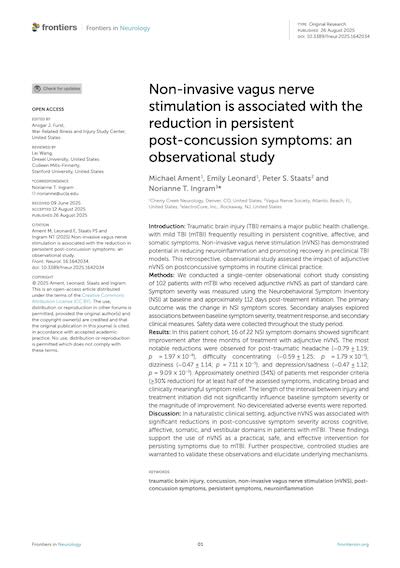Today's article comes from the Frontiers in Neurology journal. The authors are Ament et al., from Cherry Creek Neurology, in Colorado. In this paper they're exploring the efficacy of a new treatment for mild TBIs (traumatic brain injuries).
DOI: 10.3389/fneur.2025.1642034


You must be an active Journal Club member to access this content. If you're already a member, click the blue button to login. If you're not a member yet, click the sign-up button to get started.
Login to My Account
Sign Up